WE OPEN AS NORMAL! All orders will ship Tuesday to Friday. If you need to contact us about an order, or anything else, you can use our WhatsApp number: 07985497351
Looking to buy your first trials bike, but you're not sure where to start? Read on for our trials bike buyer's guide!
The main thing to break down is whether you're interested more in a competition style trials bike, or a street style trials bike. Competition style bikes aren't only for competitions, and street style bikes aren't just for riding street, so don't let the tags put you off! Let's dive in and see the differences between the two, as well as other factors that might influence your decision.
The two styles of trials bike
Choosing the right size of bike
Other considerations
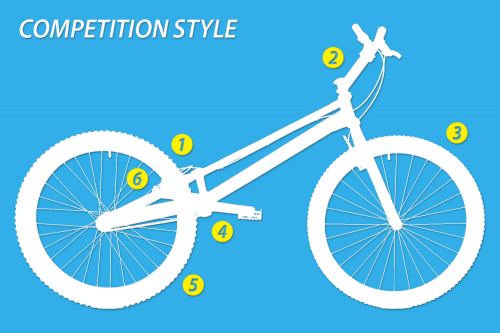
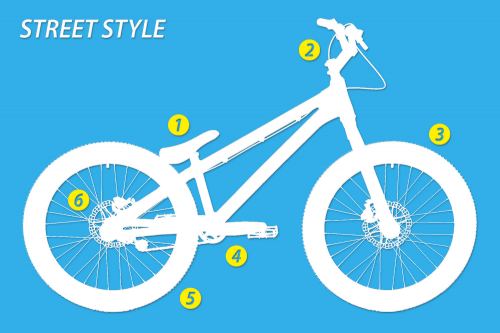
1 - Seating: The obvious one! Competition style bikes don't have a seat/saddle, unlike street style bikes which do. For competition style riding, the extra clearance through having a longer, lower standover frame can be crucial to doing bigger moves. For street style riding, having a seat/saddle can be beneficial for certain street tricks, along with there not being the same need for the extra frame clearance found on a competition style bike.
2 - Steering: Competition style bikes typically feature longer stems along with handlebars with more extreme geometry. This longer stem complements the frame geometry, and allows riders to get into the body positions required for competition style moves. They help make the bike feel much more composed on the back wheel, but do have the effect of making the bike more nervous when ridden on two wheels. Street style bikes have shorter stems with riser bars with more neutral geometry. This gives them a more balanced feel on two wheels, making them much better for spins, manuals and other street moves. It also makes them much more comfortable to ride at skateparks and pumptracks.
3 - Wheel Size: Competition style bikes are split into two main wheel sizes, 20" and 26". The smaller wheels found on 20" bikes make moving the bike around very easy, making them great for riders totally new to riding. For riders with a background in other two-wheeled sports with larger wheel sizes, 26" bikes will often be best as the skills learned on the bigger wheeled bikes will transfer over to their other disciplines more easily. For street style bikes, 24" is the main wheel size as it gives a good blend between manoeuvrability (for street influenced moves) and stability (for trials influenced moves). There are also some 26" wheel street style bikes which offer improved trials performance compared to their 24" counterparts. Both styles of bikes are available in smaller wheel sizes (16" and 18" for competition style bikes, 20" and 22" for street trials bikes) to cater for younger or shorter riders.
4 - Gearing: In order to get the acceleration and drive required for the static, power-based moves found in competitions, competition style bikes have a relatively light gearing. They will often use an 18 tooth front sprocket or freewheel, combined with a 12t (for 20" bikes) or 15t (for 26" bikes) rear sprocket. Street style bikes use a slightly harder gear ratio to allow them to get the speed required for more BMX-influenced moves, while still retaining the acceleration required for trials moves. Their gearing will typically feature a 22t chainring or sprocket at the front, with a 16t (for 24" bikes) or 18t (for 26" bikes) rear sprocket or freewheel.
5 - Geometry: For a bike to feel comfortable and stable balanced only on one wheel, it requires unique geometry. This is why competition style bikes are "long and high". They feature a long wheelbase (the measurement from the centre of the rear wheel to the centre of the front wheel), with a significantly raised bottom bracket. Combined with the steering combination touched on earlier, this helps get the bike more under the rider when either on the front or rear wheel. In turn, that makes balancing on one wheel much easier, providing a stable platform for most trials moves. Street style bikes are "short and low", featuring a wheelbase more similar to that found on a regular bike, with only a small amount of bottom bracket rise. This gives more neutral characteristics on two wheels, making street style tricks much easier! They also require less adjustment time coming from other styles of bikes as they have more intuitive handling compared to the longer, higher competition style bikes.
6 - Braking: Brakes are key for all types of trials bike, but different characteristics mean that different types of brakes are used for each style. 26" competition bikes most commonly use hydraulic rim brakes on both wheels. This type of brake keeps weight down, and also provides a direct, instant feel. 20" competition style bikes will often use a rear disc brake, combined with either a front disc or a front rim brake. The smaller wheel size allows them to make the most of the benefits of using disc brakes, without being hindered by the downsides that can be associated with them. For street style bikes, brake modulation is almost as important as outright power. For that reason, all wheel sizes use disc brakes front and rear. As well as providing the modulation required, disc brakes make much less noise than rim brakes - a handy bonus when feathering the brakes for moves like stoppies and manuals!
Choosing the right size of bike
As everybody grows at different rates, we prefer to size bikes based on rider height rather than age. For competition style bikes, we use the following guide:
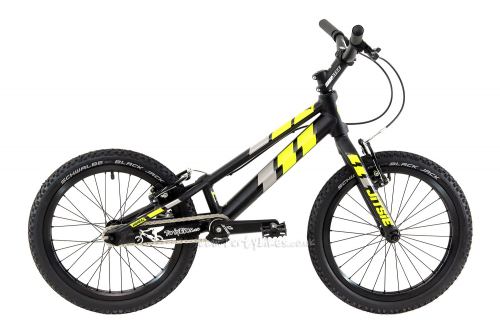
18" Wheel Bikes: Suitable for riders approximately 3ft/0.92m to 4ft 6in/1.37m tall.
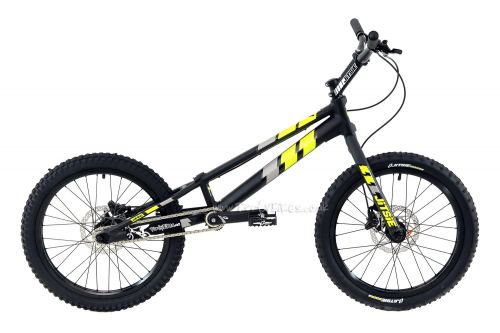
Smaller 20" Wheel Bikes: Suitable for riders approximately 3ft 9in/1.15m - 5ft/1.50m tall.
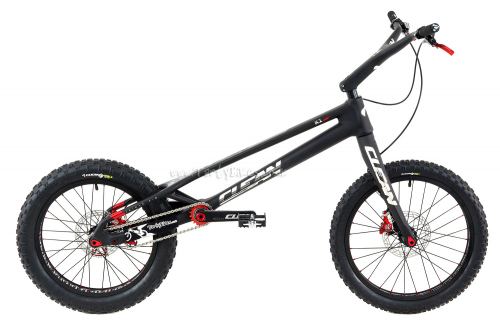
Full Size 20" Wheel Bikes: Suitable for riders 5ft/1.50m and up.
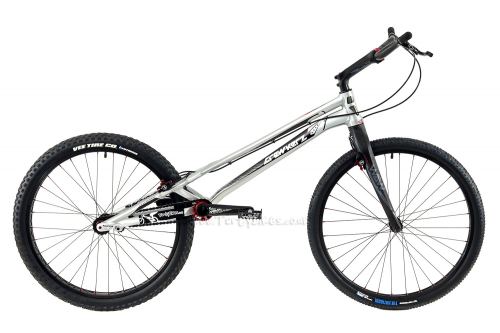
26" Wheel Bikes: Suitable for riders 5ft 3in/1.60m and up.
Sizing for street style bikes is broadly similar, but varies slightly. For street style bikes, we recommend:
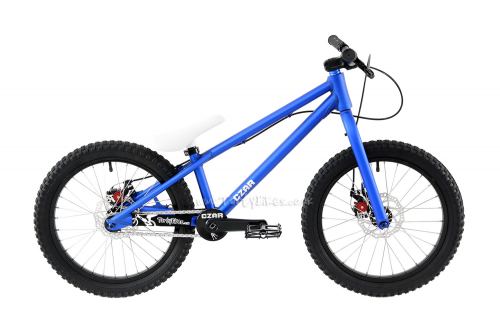
16" & 18" Wheel Bikes: Suitable for riders approximately 3ft/0.92m to 4ft/1.20m tall.
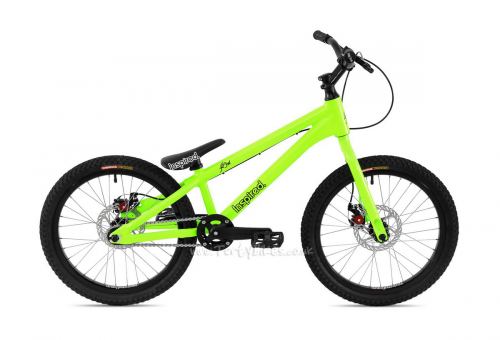
Inspired 20" Wheel & Czar 20" Wheel Bikes: Suitable for riders approximately 4ft/1.20m - 5ft/1.50m tall.
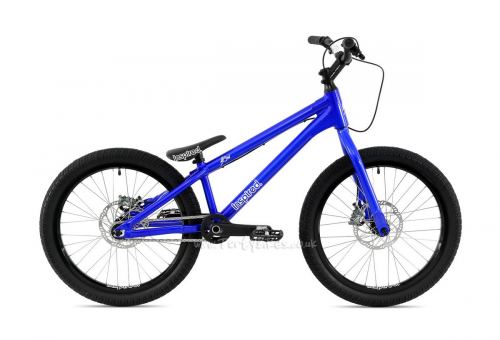
22" Wheel Bikes: Suitable for riders 4ft 7in/1.40m - 5ft 3in/1.60m tall.
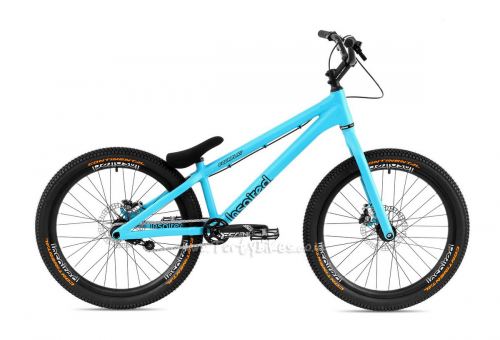
24" Wheel Bikes: Suitable for riders 5ft 1in/1.55m and up.
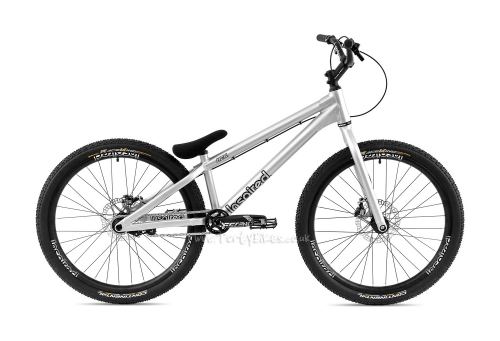
26" Wheel Bikes: Suitable for riders 5ft 3in / 1.60m and up.
We have created these suggested heights from our years seeing which bikes suit which size riders, but it's important to note that everybody is built differently, so some riders may feel better on a bike sized up or down from their recommendation. It's possible to customise the fit of any of our bikes through changing parts like the bar and stem - this allows riders to 'grow' the reach of a bike if they feel a little cramped, or to 'shrink' the reach of a bike if they feel too stretched out. If you'd like any help with working out which size stem or bar are best for you and your bike, feel free to get in touch!
If you have any questions about any of the bikes on our website, you can get in touch with us here, or through the 'Questions' form on any of our product pages. We're happy to help!
 Technical Info
Technical InfoNew to trials? Then check out our product video guides for useful tips and technical advice
 Facebook
FacebookFollow us on Facebook for exclusive deals, promo codes and offers
 Need some help?
Need some help?Have a question? No problem, call us on 01772 32 33 33 or get in touch via our contact page.
TartyBikes Ltd, Units 3-4, Club Street, Bamber Bridge, Preston, PR5 6FN
Web Design & Development by tame